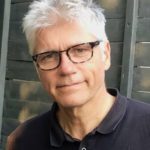Link to Pubmed [PMID] – 19914932
Nucleic Acids Res. 2010 Jan;38(2):559-69
Integrons are able to incorporate exogenous genes embedded in mobile cassettes, by a site-specific recombination mechanism. Gene cassettes are collected at the attI site, via an integrase mediated recombination between the cassette recombination site, attC, and the attI site. Interestingly, only three nucleotides are conserved between attC and attI. Here, we have determined the requirements of these in recombination, using the recombination machinery from the paradigmatic class 1 integron. We found that, strikingly, the only requirement is to have identical first nucleotide in the two partner sites, but not the nature of this nucleotide. Furthermore, we showed that the reaction is close to wild-type efficiency when one of the nucleotides in the second or third position is mutated in either the attC or the attI1 site, while identical mutations can have drastic effects when both sites are mutated, resulting in a dramatic decrease of recombination frequency compared to that of the wild-type sites. Finally, we tested the functional role of the amino acids predicted from structural data to interact with the cleavage site. We found that, if the recombination site triplets are tolerant to mutation, the amino acids interacting with them are extremely constrained.


